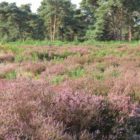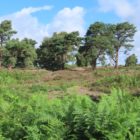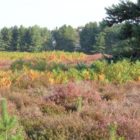Dates & Prices |
BOOK NOW |
Dates: Thursday 24th September 2020
Price: £50
Price Includes: Services of the guide for the day 09:00 – 17:00
Meeting place: Sutton Heath Southern Car Park (TM305475) off the B1083
Car Parking: Two or three separate walks – detailed (easy) instructions will be given to drive between the car park areas. All car parks are free.
Leader: Dr Chris Gibson
Group Size: Minimum of 3 and a maximum of 5 guests plus 1 leader.
Grade: 8-10km walk, mostly easy going although can be muddy in stretches after rain…but this is one of the driest parts of the country! May be some walking on loose beach shingle.
Toilet facilities : NONE other than the ‘natural option’
Holiday Highlights
- Explore some of the wilder parts of the south Suffolk heaths and coast
- Led by Dr Chris Gibson, highly experienced and professional all-round naturalist
- Visit Sutton Heath & Upper Hollesley Common and possibly Shingle Street
- Chance to look for a range of specialist flora & fauna that inhabit these special habitats
- Perfect for a family day out and equally excellent for a group of friends or natural history group gatherings
- Relaxed pace to full appreciate the wildlife and landscapes & ideal for photography
We invite you to join us for a day exploring some of the wilder parts of Suffolk with an expert naturalist guide!
 Your Guide
Your Guide

Dr Chris Gibson is an all-round naturalist, with a particular interest in plants and insects, and conservationist, having recently retired after 31 years’ work with Natural England and its predecessors. He has been leading wildlife tours around Europe since 1988, including taking trips to Berdun in the Spanish Pyrenees for more than 25 years.
Chris is also leading a new and exciting ‘Moon Moths & More’ holiday in Spain, May 2021.
Sutton Heath and Upper Hollesley Common have large tracts of lowland heath, attractive in late summer and autumn with flowering heathers and Gorse. In warm weather a great range of specialised insects can be found, from tiger beetles to Grayling butterflies, along with Adders and Common Lizards. These blogs detail more of the invertebrate and botanical interest one can find:
The heaths are also known for a suite of iconic birds. Stonechats and Dartford Warblers are reasonably reliable, Woodlarks and Hobbies perhaps less so as autumn arrives. But the winter fare of finches and thrushes help to make bird interest year-round.
Depending upon how entranced we are by the heaths, a final stop may be at the exposed coastal location of Shingle Street. Scarce plants growing in the natural stony deposits include Yellow Horned-poppy, Sea Kale, Sea Campion and Viper’s Bugloss. Any remaining flowers can attract late-season insects, and birds could include divers and grebes offshore, and autumn migrants like Wheatears.
Notes
Please bring a packed lunch, drinks and suitable footwear and clothing. Binoculars, telescopes, books and other equipment can no longer be shared, so please bring any that you like to use yourself. We may be able to find a formal picnic spot in which we could all sit in a distanced way, but please be prepared to sit on the ground.
Although we will attempt to stick to the routes as advertised, unforeseen events or ground conditions may require us to amend without notice.




To follow
New trip – testimonials will appear later

























